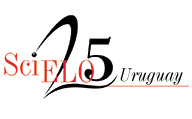Antiheroes
masks of society
DOI:
https://doi.org/10.25185/18.6Keywords:
Antihero, Watchmen, Tragic flaw, Neoliberal heroAbstract
The antihero category has been regularly portrayed as a character typology that contrasts with the protagonist. However, this conceptualization becomes difficult when the story protagonists do not follow established values and cannot be considered heroes. This article uses the film Watchmen, an original story by Alan Moore and Dave Gibbons, to analyze how these characters are constructed. It explores some of the story's main characters to analyze their motivations, concerns, and ways of solving problems. All these characters find themselves on a sort of frontier when they have to decide between doing things the right way or solving their conflicts by any means necessary, regardless of whether it harms others. Watchmen is presented as a story of its time, capable of rewriting recent history and presenting great dangers for the future. By reviewing the history of these characters and their motivations, one can find certain similarities with current narratives and with a reality that fosters the emergence of these characters.
Downloads
References
Álamo Felices, Francisco. «Introducción a la configuración narratológica de los conceptos literarios de héroe y antihéroe». Tropelías. Revista de Teoría de la Literatura y Literatura Comparada, n°19 (2013): 180-195.
Bartual, Roberto. «Watchmen: héroes y terapia del shock. Un diálogo entre Damon Lindelof y Alan Moore». Cuadernos Del Centro De Estudios De Diseño Y Comunicación, n°125 (2021): 39-62.
Bauzá, Hugo Francisco. El mito del héroe. Morfología y semántica de la figura heroica. México: Fondo de Cultura Económica, 2007.
Borges, Jorge Luis. Antología personal. Buenos Aires: Sur, 1961.
Campbell, Joseph. El héroe de las mil caras. Psicoanálisis del mito. México: Fondo de Cultura Económica, 1959.
Cardona Zuloaga, Patricia. «Del héroe mítico al mediático. Las categorías heroicas: héroe, tiempo y acción». Revista Universidad EAFIT 42, n°144 (2006): 51-68.
Correa, Gustavo. «El héroe en la picaresca y su influencia en la novela moderna española e hispanoamericana». Thesaurus: Boletín del Instituto Caro y Cuervo 32, n°1 (1977): 75-94.
Estébanez Calderón, Demetrio. Diccionario de términos literarios. Madrid: Alianza, 1999.
Freire Sánchez, Alfonso. Los antihéroes no nacen, se forjan. Arco argumental y storytelling en el relato antiheroico. Barcelona: Editorial UOC, 2022.
González Doreste, Dulce María. «Notas (hipertextuales) sobre la parodia genettiana: a propósito de “Palimpsestos”». Revista de Filología de la Universidad de La Laguna, n° 12 (1993): 83-103.
Moore, Alan y Dave Gibbons, Watchmen. The deluxe edition. Barcelona: DC Comics, 2013.
Prince, Michael J. «Alan Moore’s America: The Liberal Individual and American Identities in Watchmen». The Journal of Popular Culture 44, n°4 (2011): 815-830.
Reis, Carlos y Ana Cristina Lopes. Diccionario de Narratología. Traducido por Ángel Marcos de Dios. Salamanca: Ediciones Colegio de España, 1996.
Rodríguez Gómez, Juan Carlos. La Literatura del pobre. Granada: Comares, 1994.



























 This work is under a
This work is under a 